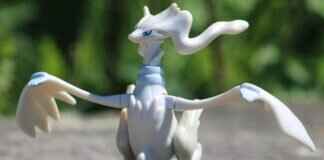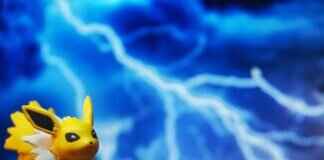This article explores the storied rivalry between the Los Angeles Dodgers and the San Francisco Giants, examining key statistics, memorable highlights, and the significant impact of these games on Major League Baseball.
Historical Overview of the Rivalry
The rivalry between the Dodgers and Giants is steeped in history, originating in the late 1800s when both teams were based in New York. The Giants were established in 1883, while the Dodgers, initially known as the Brooklyn Grays, formed in 1884. The fierce competition began in earnest when the Dodgers moved to Los Angeles in 1958. This geographical shift intensified the rivalry, as both teams sought dominance in the National League. Over the decades, the rivalry has been marked by legendary moments, fierce fan loyalty, and numerous playoff clashes, making it one of the most compelling narratives in sports.
Significant Games in History
Several games have etched themselves into the annals of this rivalry, showcasing the intensity and stakes involved. One such game was the 1951 playoff series, where Bobby Thomson’s “Shot Heard ‘Round the World” secured the Giants’ place in the World Series. Another unforgettable matchup occurred in 1987, when the Dodgers clinched the National League West title in a dramatic final game. These pivotal moments not only defined the teams’ legacies but also captivated fans, further fueling the rivalry’s passion.
Key Player Contributions
Throughout the years, numerous legendary players have shaped the Dodgers-Giants rivalry. For the Dodgers, icons like Sandy Koufax and Clayton Kershaw have delivered unforgettable performances. Koufax’s dominance in the 1960s and Kershaw’s recent excellence have solidified their status in franchise history. On the Giants’ side, Willie Mays and Buster Posey stand out as pivotal figures. Mays’ electrifying play and Posey’s leadership during their championship runs have left an indelible mark on the rivalry.
Statistical Breakdown of Recent Seasons
In recent seasons, the Dodgers have often outperformed the Giants in terms of overall wins and playoff appearances. Analyzing the win-loss records, the Dodgers have consistently been contenders, while the Giants have experienced fluctuations in performance. Key statistics such as batting averages, ERA, and on-base percentages reveal the strengths and weaknesses of each team, providing insight into their competitive dynamics. The 2021 season, for instance, showcased a thrilling race for the NL West title, highlighting the intensity of their competition.
Fan Engagement and Attendance
The rivalry extends beyond the diamond, with both teams boasting passionate fan bases. Attendance figures during rivalry games often reach capacity, creating an electric atmosphere. The fans’ enthusiasm is palpable, as chants and cheers fill the stadium, reflecting the deep-rooted connection to their teams. This engagement not only influences game-day experiences but also impacts ticket sales and merchandise, underscoring the economic significance of the rivalry.
Impact of Stadiums on Gameplay
Dodger Stadium and Oracle Park are two iconic venues that significantly influence gameplay. Dodger Stadium, known for its spacious outfield and favorable pitching conditions, has been a fortress for the Dodgers. Conversely, Oracle Park, with its unique dimensions and notorious winds, poses challenges for hitters. Understanding how these stadiums affect player performance can provide insights into the outcomes of rivalry games.
Managerial Strategies in Rivalry Games
Managers play a crucial role in shaping the outcomes of rivalry contests. Their strategies can dictate pitching matchups, batting orders, and defensive alignments. Notable managers like Tommy Lasorda for the Dodgers and Bruce Bochy for the Giants have left their mark on this rivalry through innovative tactics. Analyzing their decisions during critical games reveals how managerial acumen can influence the rivalry’s narrative.
Head-to-Head Records
A comprehensive look at the head-to-head records between the Dodgers and Giants provides context for their rivalry. Historically, the Dodgers have held a slight edge in overall wins. However, the competition remains fierce, with both teams trading victories in key matchups. This section delves into trends and patterns, highlighting how each team has performed against the other over the years.
Impact of Trades and Free Agency
Player movement through trades and free agency has the potential to reshape the dynamics of this rivalry. High-profile trades, such as the acquisition of Mookie Betts by the Dodgers, have significant implications for team performance. Conversely, the Giants have made strategic signings that bolster their roster. This section explores how these decisions impact the competitive landscape of the rivalry.
Injuries and Their Effects on Performance
Injuries can dramatically alter the balance of power in any season. Key player injuries have historically shifted the rivalry’s dynamics, affecting team performance and playoff aspirations. This section discusses notable injuries and their implications on both teams, illustrating how health can determine the outcomes of critical matchups.
Future Outlook for Both Teams
As Major League Baseball evolves, the future of the Dodgers and Giants rivalry remains bright. With emerging talents and strong farm systems, both teams are poised to remain competitive. This section offers insights into prospects and potential roster changes, setting the stage for continued excitement in the rivalry.
Conclusion: The Enduring Legacy of the Rivalry
The Dodgers and Giants rivalry transcends mere competition; it represents a rich tradition in baseball. As both teams continue to evolve, the legacy of their matchups will undoubtedly endure, captivating fans for generations to come.

Historical Overview of the Rivalry
The rivalry between the Los Angeles Dodgers and the San Francisco Giants is not just a contest of skill on the baseball diamond; it is a rich tapestry woven from over a century of competition, passion, and regional pride. This historical overview delves deep into the origins of this fierce rivalry, tracing its evolution through significant events, cultural shifts, and unforgettable moments.
Initially rooted in the late 19th century, the rivalry began when both teams were based in New York. The Giants, established in 1883, and the Dodgers, originally known as the Brooklyn Superbas, quickly became competitors in the National League. Their early encounters were marked by intense games and a burgeoning fan base that would come to define the culture surrounding both teams.
In 1957, the landscape of baseball changed dramatically when the Dodgers and Giants relocated to California, igniting a new chapter in their rivalry. The move was controversial, as both franchises left behind a storied history in New York, but it also set the stage for a heated competition in the West Coast baseball scene. The Giants settled in San Francisco, while the Dodgers found their new home in Los Angeles, leading to a fierce regional rivalry that would captivate fans across the state.
Over the decades, the Dodgers and Giants have faced off in numerous pivotal matchups that have shaped the course of baseball history. Notable moments include the 1951 National League playoff, where Bobby Thomson’s infamous “Shot Heard ‘Round the World” secured the Giants a spot in the World Series, a moment that still resonates with fans today. Similarly, the 1987 NL West race was marked by dramatic games that showcased the intensity of their rivalry, culminating in the Dodgers clinching the division title in a thrilling showdown.
The rivalry has also seen its share of legendary players, each contributing to the lore of these two teams. Icons like Sandy Koufax and Juan Marichal not only defined their respective franchises but also became symbols of the fierce competition between them. Their performances have left an indelible mark on the history of the rivalry, exemplifying the passion and skill that fans have come to expect in these matchups.
As the rivalry continues to evolve, it remains a testament to the enduring nature of competition in sports. The Dodgers and Giants have fostered a culture of loyalty and pride among their fans, who eagerly anticipate each season’s encounters. The games are not just about the scores; they are about the stories, the emotions, and the shared experiences that define what it means to be a fan of either team.
In summary, the historical overview of the Dodgers and Giants rivalry reveals a complex narrative filled with passion, memorable moments, and a commitment to excellence. As both teams look to the future, they carry with them the weight of their storied past, ensuring that this rivalry will remain one of the most celebrated in sports history.
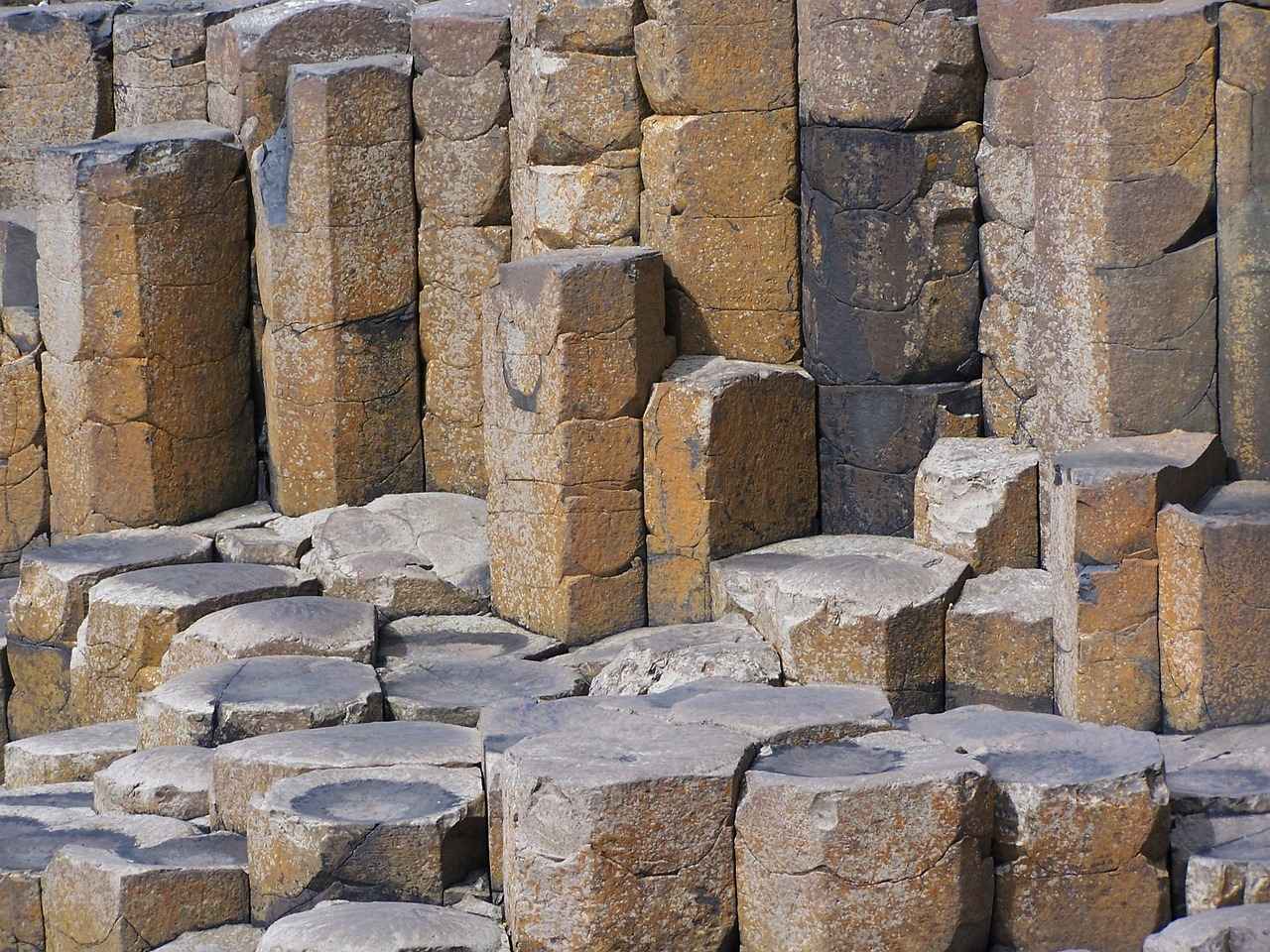
Significant Games in History
The rivalry between the Los Angeles Dodgers and the San Francisco Giants is steeped in history, showcasing a series of games that have not only defined the teams but have also left an indelible mark on Major League Baseball. This section focuses on some of the most significant games in the rivalry, illustrating their intensity and the implications they held for both teams.
One of the most memorable encounters occurred on October 3, 1951, during the National League pennant race. The Dodgers held a commanding lead until the Giants staged a remarkable comeback, culminating in Bobby Thomson’s infamous “Shot Heard ‘Round the World.” This game not only secured the Giants a spot in the World Series but also intensified the rivalry, embedding it deeply in the hearts of fans.
Fast forward to 2016, when the Dodgers and Giants faced off in a crucial series that had playoff implications. The tension was palpable as both teams battled for supremacy in the National League West. The Dodgers clinched the division title in a nail-biting game that saw a dramatic home run from Justin Turner, showcasing the fierce competition that has characterized this rivalry for decades.
Another game worth mentioning took place on September 18, 2021, where the stakes were incredibly high as both teams vied for the top spot in the division. The game was marked by a tense atmosphere, with fans on the edge of their seats. The Giants managed to pull off a victory in the final innings, further fueling the competitive spirit that defines this historic matchup.
Throughout the years, the significance of these games extends beyond mere statistics. They have shaped the identities of both franchises, influencing player legacies and fan loyalty. The intensity of the rivalry is not just about wins and losses; it’s about the emotional investment of the fans and the pride associated with each victory.
In summary, the Dodgers-Giants rivalry has produced numerous significant games that highlight the fierce competition and emotional stakes involved. Each matchup serves as a reminder of the rich history shared between these two teams, making every game a must-watch event for baseball fans.

Key Player Contributions
The rivalry between the Los Angeles Dodgers and the San Francisco Giants is not only defined by the games played but also by the legendary players who have donned their respective jerseys. These athletes have not only made significant contributions on the field but have also shaped the very essence of this storied competition. In this section, we will explore the impact of notable players from both teams and how their performances have influenced the rivalry.
Throughout the decades, both the Dodgers and the Giants have had their share of iconic players who have left an indelible mark on the rivalry. For the Dodgers, legends such as Jackie Robinson and Sandy Koufax are not just remembered for their exceptional skills but also for their roles in the broader narrative of baseball history. Robinson, who broke the color barrier in Major League Baseball, played pivotal games against the Giants, showcasing his remarkable talent and determination. His contributions extended beyond the diamond, influencing societal change and inspiring generations.
On the other side, the Giants boast their own legends, including Willie Mays and Buster Posey. Mays, often regarded as one of the greatest baseball players of all time, delivered unforgettable moments in games against the Dodgers. His iconic over-the-shoulder catch in the 1954 World Series remains a highlight in baseball lore, illustrating his exceptional athleticism and flair. Posey, a modern-day star, has been instrumental in the Giants’ success, leading them to multiple championships and consistently delivering clutch performances against their rivals.
Each player’s unique style and contributions have not only influenced their teams but have also added layers to the rivalry itself. Statistical achievements highlight their impact; for instance, Mays’ career batting average against the Dodgers stands as a testament to his dominance in these matchups. Similarly, Koufax’s remarkable pitching records, especially during critical games, have solidified his status as a Dodgers legend.
Moreover, the rivalry has seen players who may not have achieved legendary status but have nonetheless made memorable contributions. Players like Fernando Valenzuela and Barry Bonds have created unforgettable moments that fans still talk about today. Valenzuela’s “Fernandomania” captivated a generation, while Bonds’ home run chase brought unprecedented attention to the rivalry. These contributions, while perhaps less celebrated, are vital threads in the fabric of Dodgers-Giants history.
The impact of these players extends beyond their individual statistics; they have become symbols of their teams and the rivalry itself. Fans remember the dramatic home runs, the clutch pitching performances, and the intense moments that defined games between the two franchises. The contributions of these athletes have not only shaped the outcomes of individual games but have also woven a rich tapestry of stories and memories that continue to resonate with fans today.
As we look to the future, the legacy of these players will undoubtedly influence the next generation of athletes. The passion and intensity that they brought to the field set the standard for what it means to compete in one of baseball’s greatest rivalries. With each new season, the hope is that new stars will emerge to carry the torch and continue the tradition of excellence that has defined the Dodgers and Giants for over a century.

Statistical Breakdown of Recent Seasons
In the ever-evolving landscape of Major League Baseball, analyzing recent seasons is essential for understanding the performance trends of the Los Angeles Dodgers and the San Francisco Giants. By examining key statistics and metrics, we can uncover how these two historic franchises stack up against each other in their ongoing rivalry.
Over the past few seasons, the Dodgers have consistently showcased their strength, often leading in various statistical categories. For instance, in the 2022 season, the Dodgers boasted a remarkable win-loss record of 111-51, which was one of the best in the league. Their offensive prowess was evident as they ranked among the top teams in runs scored, home runs, and on-base percentage. The combination of power hitters and a disciplined approach at the plate has allowed them to maintain a competitive edge.
On the other hand, the Giants have also demonstrated resilience and adaptability. In the 2021 season, they surprised many by finishing with a record of 107-55, showcasing their ability to compete at a high level. Their success was attributed to a strong pitching staff that excelled in strikeouts and earned run average (ERA), as well as a balanced offensive lineup that could score in various ways. This adaptability has made them formidable opponents in head-to-head matchups.
| Statistic | Los Angeles Dodgers (2022) | San Francisco Giants (2021) |
|---|---|---|
| Win-Loss Record | 111-51 | 107-55 |
| Runs Scored | 847 | 804 |
| Home Runs | 211 | 222 |
| Team ERA | 2.81 | 3.24 |
In terms of head-to-head matchups, recent seasons have shown a competitive balance between the two teams. The 2022 season saw the Dodgers winning the majority of their encounters, but the Giants managed to secure crucial victories that impacted playoff positioning. These games are not just about statistics; they embody the intensity and passion that characterize this rivalry.
Moreover, player performance has been a critical factor in determining outcomes. Key players such as Freddie Freeman for the Dodgers and Buster Posey for the Giants have made significant contributions during critical games. Their ability to perform under pressure often sways the momentum in favor of their respective teams.
As we look ahead, understanding these statistical trends and metrics provides valuable insights into how the Dodgers and Giants can adjust their strategies and lineups. The future of this rivalry will undoubtedly be shaped by the performance of emerging talents and the management decisions made in the off-season.
In conclusion, the statistical breakdown of recent seasons highlights the competitive nature of the Dodgers and Giants rivalry. By analyzing their performance trends, we gain a deeper appreciation for the complexities of each matchup and the factors that contribute to their ongoing battle for supremacy in Major League Baseball.

Fan Engagement and Attendance
The rivalry between the Los Angeles Dodgers and the San Francisco Giants is not only defined by the action on the field but also by the fervent passion exhibited by their fan bases. This section explores how fan culture significantly influences the atmosphere during games, driving attendance and engagement in ways that enhance the overall experience of this storied rivalry.
Fan engagement is a critical component of the success of any sports franchise, particularly in baseball, where the culture surrounding the game is deeply rooted in tradition. In the case of the Dodgers and Giants, their fans are known for their unwavering loyalty and commitment, which creates an electric atmosphere during games. This engagement can be seen through various channels, including social media interactions, attendance at games, and participation in community events.
Attendance figures for Dodgers-Giants games often reflect the intense competition between the two teams. Each matchup draws thousands of spectators, with fans from both sides filling the stands. The palpable energy created by a full stadium can significantly affect player performance and the overall game experience. Historically, these games have recorded some of the highest attendance numbers in Major League Baseball, underscoring the importance of fan presence in shaping the rivalry.
Both the Dodgers and Giants boast rich fan traditions that enhance the experience of rivalry games. For instance, Dodgers fans are known for their iconic blue attire and the famous “Wave,” while Giants supporters often wear their team colors and chant during critical moments. These traditions not only foster a sense of community among fans but also contribute to the overall atmosphere of excitement and anticipation during games.
In today’s digital age, social media plays a pivotal role in fan engagement. Platforms like Twitter, Instagram, and Facebook allow fans to share their experiences, express their opinions, and connect with fellow supporters. During Dodgers-Giants games, social media activity often peaks, with hashtags trending and fans sharing live updates, photos, and videos. This online engagement complements the in-stadium experience, creating a multi-dimensional fan culture that transcends geographical boundaries.
Community initiatives also play a significant role in fostering fan loyalty. Both teams actively engage with their local communities through charity events, youth programs, and outreach initiatives. This commitment to community service strengthens the bond between the teams and their fans, encouraging greater attendance and participation in games. Fans often feel a sense of pride in supporting teams that contribute positively to their communities, further enhancing their engagement and loyalty.
The rivalry between the Dodgers and Giants is amplified by the passionate engagement of their fan bases. Through traditions, social media interactions, and community involvement, fans create an atmosphere that is integral to the experience of rivalry games. As the rivalry continues to evolve, the role of fan culture will remain a defining factor in shaping the future of this iconic matchup.
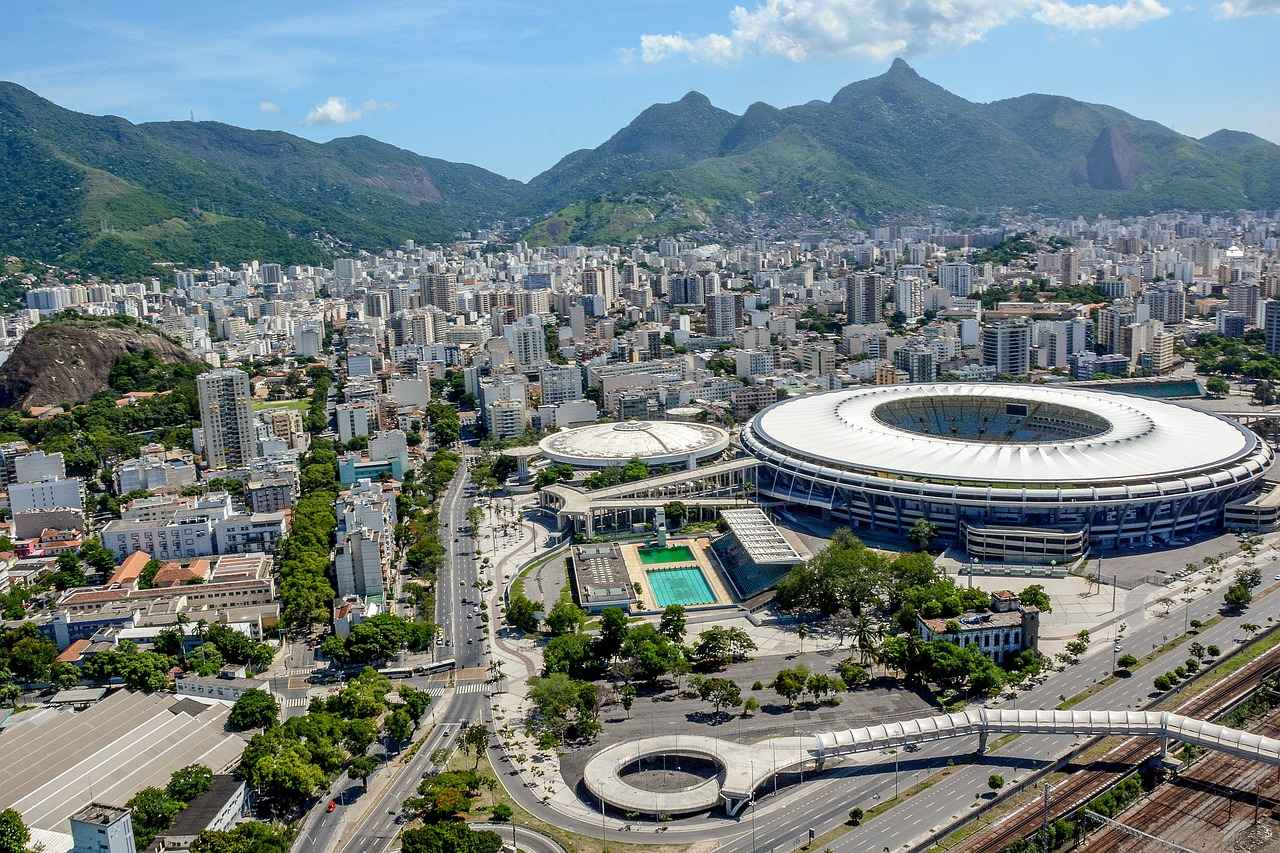
Impact of Stadiums on Gameplay
The atmosphere and design of a baseball stadium can significantly influence the outcome of games and the overall experience for fans. In the context of the storied rivalry between the Los Angeles Dodgers and the San Francisco Giants, both Dodger Stadium and Oracle Park have unique characteristics that shape gameplay and fan engagement.
- Dodger Stadium: A Pitcher’s Paradise
- Elevation and Air Quality: Located in Chavez Ravine, Dodger Stadium sits at a higher elevation compared to many other MLB parks. This elevation can lead to thinner air, which can affect the trajectory of the ball. Pitchers often find it easier to maintain their velocity, while hitters may struggle with the ball carrying less than expected.
- Dimensions and Outfield: The outfield dimensions at Dodger Stadium are relatively large, particularly in left-center field. This makes it challenging for hitters to clear the fences, favoring pitchers who can keep the ball in the park. The unique angle of the outfield walls can create tricky plays for outfielders, impacting defensive strategies.
- Oracle Park: The Bay’s Challenge
- Weather Conditions: Situated along the San Francisco Bay, Oracle Park often experiences strong winds and chilly temperatures. These conditions can significantly impact gameplay, as the wind direction can alter the flight of the ball, making it essential for batters to adjust their swings accordingly.
- Right Field and the Cove: One of the most iconic features of Oracle Park is the right-field wall, which is known for its notorious home run distance. The “Splash Zone” beyond the right-field fence is a popular attraction, but it also represents a challenge for hitters trying to send the ball out of the park. This unique design can lead to strategic shifts in how teams approach their hitting.
The differences between Dodger Stadium and Oracle Park extend beyond mere aesthetics; they play a crucial role in how teams prepare for games. For instance, the Dodgers may focus on developing pitchers who can thrive in their home environment, while the Giants might emphasize a more versatile batting lineup to adapt to the unpredictable conditions at Oracle Park.
Moreover, the fan experience is also deeply intertwined with the stadium’s characteristics. Dodger Stadium, known for its classic design and expansive seating, offers a unique atmosphere that fosters a sense of community among fans. In contrast, Oracle Park’s stunning views of the bay and modern amenities create a vibrant and energetic environment, attracting a diverse crowd.
Ultimately, the impact of these stadiums on gameplay is a testament to how the physical space can influence the strategies employed by teams and the overall experience for fans. As the Dodgers and Giants continue their rivalry, the distinct characteristics of Dodger Stadium and Oracle Park will remain pivotal in shaping the outcomes of their encounters, making each game a unique spectacle.
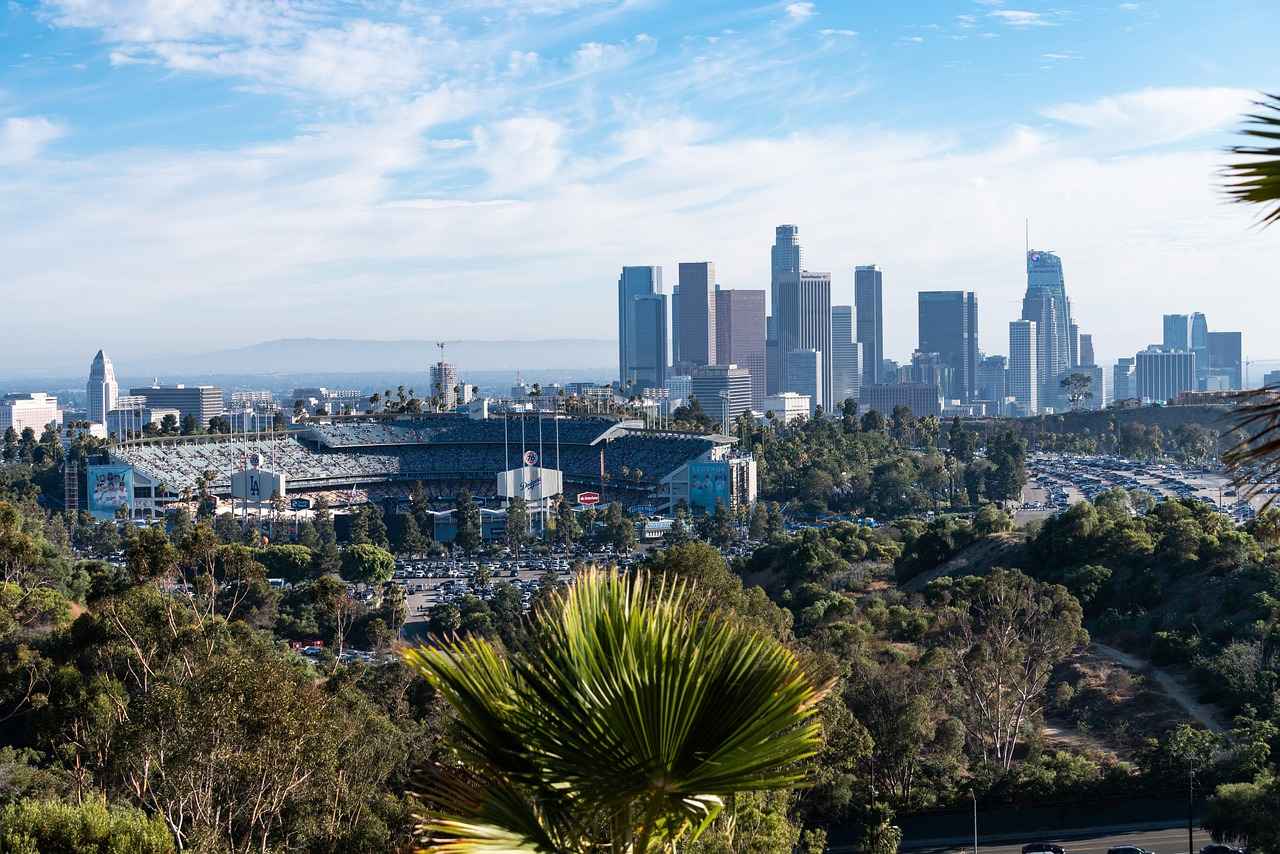
Managerial Strategies in Rivalry Games
The role of a manager in baseball is often understated, yet it becomes particularly critical during rivalry games, such as those between the Los Angeles Dodgers and the San Francisco Giants. In these high-stakes matchups, managers must employ a variety of strategies to gain a competitive edge. This section delves into the tactics and decision-making processes that define managerial approaches in these intense contests.
- Game Preparation and Analysis: Before a rivalry game, managers spend considerable time analyzing past performances, player statistics, and opponent strategies. This preparation includes studying the opposing team’s recent games to identify weaknesses that can be exploited.
- Lineup Decisions: The selection of the starting lineup is crucial. Managers must consider factors such as player form, matchups against opposing pitchers, and defensive alignments. For instance, against a particularly strong left-handed pitcher, a manager may opt to include more right-handed hitters in the lineup.
- In-Game Adjustments: During the game, managers need to be adaptable. This includes making timely pitching changes, adjusting defensive positions, and altering batting orders based on the game’s flow. These decisions can significantly impact the game’s outcome, especially in rivalry settings where momentum can shift rapidly.
- Utilizing Bullpen Effectively: The management of the bullpen is another critical aspect. Managers must decide when to bring in relief pitchers and which ones to use based on matchups, game situations, and player fatigue levels. In rivalry games, where emotions run high, the choice of a closer can be particularly pivotal.
- Psychological Warfare: Managers often engage in psychological tactics to motivate their players or unsettle their opponents. This might include public statements, strategic use of timeouts, or even the way they handle player substitutions. Creating a winning mentality is essential in rivalry games.
- Fan Engagement and Atmosphere: The atmosphere in rivalry games is electric, and managers often play to the crowd. They may make decisions that resonate with fans, such as intentionally walking a key player to set up a double play, knowing it will energize the home crowd.
The effectiveness of these strategies is often reflected in the outcomes of rivalry games. For instance, when a manager successfully implements a bold strategy, it can lead to a memorable victory that becomes part of the team’s lore. Conversely, poor decision-making can result in a loss that fans remember long after the game is over.
Moreover, the historical context of these rivalries adds another layer of complexity. Managers must be aware of past encounters and how those games have shaped current player dynamics. This awareness can inform their strategies and help them navigate the emotional landscape of rivalry games.
In conclusion, the strategies employed by managers during rivalry games are multifaceted and crucial to the outcomes of these highly competitive matchups. From preparation and in-game adjustments to psychological tactics, the decisions made by managers can have lasting impacts on the teams and their legacies in the storied rivalry between the Dodgers and Giants.

Head-to-Head Records
Understanding the between the Los Angeles Dodgers and the San Francisco Giants is essential for grasping the intensity of their rivalry. This section delves into the all-time win-loss statistics, revealing patterns and trends that have emerged over the years.
The Dodgers and Giants have faced each other thousands of times since their first meeting, with the rivalry igniting in the late 1800s. As of the end of the 2023 season, the Dodgers hold a slight edge in the overall win-loss record. The all-time record showcases the fierce competition, with both teams trading victories in crucial matchups.
| Season | Dodgers Wins | Giants Wins |
|---|---|---|
| 2023 | 11 | 8 |
| 2022 | 14 | 5 |
| 2021 | 10 | 9 |
| 2020 | 8 | 2 |
Analyzing these records reveals notable trends. For instance, the Dodgers have consistently performed well at home, leveraging the advantages of Dodger Stadium’s unique environment. Conversely, the Giants have shown resilience at Oracle Park, often pulling off surprising victories in critical moments.
In recent years, the rivalry has intensified, with both teams vying for dominance in the National League West. The competitive nature of the games is reflected in the close scores, often coming down to the final innings. The head-to-head matchups are not just about wins and losses; they also embody the passion and dedication of both fan bases, each eager to claim bragging rights.
Furthermore, significant player performances often impact these records. Legendary players from both teams have etched their names in rivalry lore, with memorable moments that fans cherish. For instance, clutch home runs or game-saving plays can swing the momentum in favor of one team, affecting the overall head-to-head statistics.
As we look to the future, the head-to-head records will continue to evolve. With emerging talents and strategic changes, the dynamics of this rivalry promise to bring more excitement to fans. Keeping track of these statistics not only enhances the understanding of the rivalry but also adds to the anticipation of upcoming matchups.
In conclusion, the head-to-head records between the Dodgers and Giants provide a fascinating insight into the nature of their rivalry. Each game is a chapter in a long history filled with competition, passion, and unforgettable moments. Understanding these records helps fans appreciate the stakes involved every time these two teams meet on the field.

Impact of Trades and Free Agency
The rivalry between the Los Angeles Dodgers and the San Francisco Giants has been shaped not only by the on-field performances of their players but also by significant player movements through trades and free agency. These transactions can dramatically alter team dynamics, impacting both immediate performance and long-term strategies.
- Key Trades that Shook the Rivalry: Over the years, several trades have sent shockwaves through the Dodgers-Giants rivalry. One of the most notable was the trade that brought Rich Hill to the Dodgers in 2016. Hill’s pitching prowess helped the Dodgers secure crucial victories against the Giants, intensifying the competition.
- Free Agency Signings: Free agency has also played a pivotal role in this rivalry. The Giants’ signing of Johnny Cueto in 2016 added a formidable presence to their rotation, allowing them to compete fiercely against the Dodgers. Cueto’s performances in key matchups often shifted the momentum in favor of the Giants.
- Impact of Star Players: The addition of star players can elevate a team’s performance. For instance, when the Dodgers signed Mookie Betts in 2020, it not only bolstered their lineup but also raised the stakes in the rivalry. Betts’ ability to perform in high-pressure situations has made him a key player in the Dodgers’ efforts to dominate the Giants.
- Homegrown Talent vs. Acquired Stars: The Dodgers have historically focused on developing homegrown talent, while the Giants have been more inclined to acquire established stars. This difference in strategy has influenced the rivalry’s dynamics, with each team attempting to outmaneuver the other in trades and free agency.
Strategic Implications of Player Movements
The strategic implications of player movements are profound. Each trade or signing can shift the balance of power, as teams adjust their rosters to counteract the strengths of their rivals. For example, when the Dodgers traded for Max Scherzer in 2021, it not only strengthened their pitching rotation but also sent a message to the Giants that they were serious contenders for the championship.
The Giants, in response, have made moves to bolster their roster, such as signing Kevin Gausman, who emerged as a dominant pitcher during his tenure. This back-and-forth in player acquisitions keeps both teams on their toes, ensuring that the rivalry remains competitive and exciting.
Future Considerations
As both teams look to the future, the impact of trades and free agency will continue to be a critical factor. With the ever-changing landscape of Major League Baseball, teams must remain agile, adapting their strategies to capitalize on emerging talents and available players. The rivalry will undoubtedly evolve as new stars emerge and veterans transition out, keeping fans engaged and invested in every matchup.
In conclusion, the impact of trades and free agency on the Dodgers-Giants rivalry cannot be overstated. These player movements not only affect the immediate competitive landscape but also shape the long-term strategies of both franchises. As each team seeks to gain the upper hand, the ongoing saga of trades and signings will continue to capture the attention of fans and analysts alike.

Injuries and Their Effects on Performance
Injuries in professional sports can drastically alter the trajectory of a season, particularly in a fierce rivalry like that of the Los Angeles Dodgers and the San Francisco Giants. Over the years, the impact of injuries to key players has not only affected team performance but has also shifted the balance of power in this storied competition. This section delves into how injuries have played a pivotal role in shaping the outcomes of crucial matchups between these two teams.
Injuries to star players often create a ripple effect throughout the roster. For instance, when a leading pitcher or a power hitter is sidelined, the entire team must adjust its strategy. This was evident during the 2018 season when the Dodgers faced a significant setback due to injuries to their starting lineup. With Cody Bellinger and Justin Turner both battling injuries at critical points in the season, the team struggled to maintain its competitive edge against the Giants. Such disruptions can lead to a decline in overall performance, allowing the rival team to capitalize on the weakened roster.
Moreover, the psychological aspect of injuries cannot be overlooked. Teams often experience a shift in morale when key players are injured. The Giants have historically capitalized on these moments, using them to boost their performance against a wounded opponent. For example, during the 2014 season, the Giants faced the Dodgers while they were missing several key players due to injuries. This provided the Giants with a crucial opportunity to gain ground in the standings, which they seized with both hands.
Injuries also affect managerial decisions. Managers must adapt their game plans, often relying on less experienced players or making strategic changes that could alter the dynamics of the game. This was evident during the 2020 season when the Dodgers had to shift their pitching rotation due to injuries to their starters. The adjustments made by manager Dave Roberts demonstrated the necessity of flexibility in the face of adversity, ultimately leading to a successful postseason run.
Furthermore, the long-term effects of injuries can extend beyond a single season. A player’s inability to perform at their peak can influence trades, free agency decisions, and even the drafting strategies of both teams. For instance, the Dodgers’ decision to pursue certain players in the offseason may be influenced by their assessment of injury-prone players from rival teams, like the Giants. This strategic evaluation can reshape the rivalry in unexpected ways.
In conclusion, the impact of injuries on the Dodgers-Giants rivalry is profound and multifaceted. From immediate performance declines to long-term strategic shifts, injuries have the power to redefine the competitive landscape. As both teams continue to vie for supremacy in Major League Baseball, the specter of injuries will always loom large, reminding fans and players alike of the unpredictable nature of sports.

Future Outlook for Both Teams
The rivalry between the Los Angeles Dodgers and the San Francisco Giants is not only steeped in history but also rich with future potential. As both teams continue to evolve, understanding their future outlook becomes crucial for fans and analysts alike. This section will explore the prospects and upcoming talent that could shape the trajectory of both franchises in the coming years.
The Los Angeles Dodgers have consistently been a powerhouse in Major League Baseball, and their future looks bright. The team has invested heavily in its minor league system, resulting in a pipeline of talented prospects. Players such as Diego Cartaya, a highly-rated catcher, and Gavin Stone, a promising pitcher, are expected to make significant contributions in the near future. These young stars are not just filling gaps; they are poised to become cornerstones of the franchise.
Moreover, the Dodgers’ front office has shown a commitment to maintaining a competitive roster through smart trades and free-agent signings. The combination of established stars and emerging talent sets the stage for continued success. As the team looks to capitalize on its recent playoff appearances, the integration of these prospects will be vital in sustaining their championship aspirations.
On the other side of the rivalry, the San Francisco Giants are also making strategic moves to ensure their competitiveness. The organization has focused on rebuilding its roster while emphasizing player development. With a keen eye on young talent, the Giants have drafted players like Marco Luciano and Kyle Harrison, who are expected to be integral to the team’s future success.
Additionally, the Giants have implemented innovative strategies to enhance player performance, including advanced analytics and modern training techniques. This forward-thinking approach aims to maximize the potential of both current players and prospects. As the Giants continue to adapt to the changing landscape of baseball, their focus on nurturing young talent will be key to their long-term success.
As both the Dodgers and Giants look to the future, the role of analytics cannot be understated. Both teams have embraced data-driven decision-making, allowing them to evaluate player performance and make informed strategic choices. This analytical approach not only aids in player development but also enhances in-game strategies.
For instance, the Dodgers have been at the forefront of utilizing data to optimize pitching rotations and batting lineups. Similarly, the Giants are leveraging analytics to identify undervalued players in the market, which could lead to significant gains in performance. As the game continues to evolve, teams that effectively harness the power of analytics will likely find themselves at an advantage.
Player development is crucial for both the Dodgers and Giants as they look to build sustainable success. The Dodgers’ commitment to their minor league system has produced a steady stream of talent that has already made an impact at the major league level. The emphasis on developing young players ensures that the team remains competitive even as veteran players transition out.
Meanwhile, the Giants are investing in their player development programs, focusing on not just the physical aspects of the game but also mental conditioning and resilience. This holistic approach aims to prepare players for the pressures of major league baseball, ultimately leading to better performance on the field.
Despite the promising outlook, both teams face challenges that could impact their futures. The Dodgers must navigate the complexities of maintaining a high payroll while ensuring that they can still bring in top-tier talent. Balancing financial constraints with competitive aspirations will be critical.
For the Giants, the challenge lies in effectively integrating their young prospects into a competitive roster without stunting their growth. The transition from minor league to major league play can be daunting, and ensuring that players adapt successfully will be key to the team’s future.
In conclusion, the future of both the Los Angeles Dodgers and San Francisco Giants is filled with potential and challenges. As they continue to develop their rosters and implement innovative strategies, the rivalry will only intensify, making for an exciting era in baseball.

Conclusion: The Enduring Legacy of the Rivalry
The rivalry between the Los Angeles Dodgers and the San Francisco Giants is a hallmark of Major League Baseball, characterized by its intensity and rich history. This matchup has evolved into a cultural phenomenon that transcends the sport, embodying the spirit of competition and regional pride. As we delve into the enduring legacy of this fierce rivalry, it becomes clear that it represents more than just a series of games; it is a celebration of tradition, talent, and tenacity.
Throughout the decades, the Dodgers and Giants have engaged in numerous memorable encounters that have left an indelible mark on baseball history. From legendary players to unforgettable moments, each game adds to the narrative of their competition. The rivalry began in the late 19th century when both teams were based in New York, and it has since migrated to the West Coast, maintaining its intensity and significance. This long-standing competition has produced iconic players such as Sandy Koufax, Willie Mays, and more recently, Buster Posey, each contributing to the lore of the rivalry.
Key Moments That Defined the Rivalry
- In 1951, the Giants’ dramatic comeback to win the National League pennant with Bobby Thomson’s “Shot Heard ‘Round the World” is one of the most famous moments in baseball history.
- The 1981 National League Championship Series featured a pivotal game that showcased the intensity of the rivalry, with the Dodgers emerging victorious.
- In recent years, the rivalry has continued to flourish, highlighted by thrilling playoff encounters and memorable regular-season matchups that have kept fans on the edge of their seats.
Impact on Fans and Community
The Dodgers and Giants rivalry extends beyond the field, deeply influencing fan culture in both Los Angeles and San Francisco. Fans of both teams are known for their passionate support, creating electric atmospheres during games. The rivalry has fostered a sense of community among fans, with families often divided in their loyalties. This unique dynamic enhances the experience of attending games, making each matchup a significant event on the baseball calendar.
Future Prospects of the Rivalry
As Major League Baseball continues to evolve, the future of the Dodgers and Giants rivalry looks promising. Both teams are investing in young talent and innovative strategies, ensuring that the competition remains fierce. The emergence of new stars and the ongoing commitment to excellence from both franchises suggest that this rivalry will thrive for generations to come.
In conclusion, the Dodgers and Giants rivalry is a testament to the enduring appeal of baseball. It encapsulates the essence of competition, community, and celebration. As we look to the future, the hope is that this iconic matchup will continue to captivate audiences, adding new chapters to its storied history.
Frequently Asked Questions
- What is the history behind the Dodgers and Giants rivalry?
The rivalry between the Los Angeles Dodgers and San Francisco Giants dates back to the late 1800s, making it one of the oldest and most intense in sports. It originated when both teams were based in New York and has evolved through numerous memorable moments since their relocation to California.
- Which games are considered the most significant in this rivalry?
Several games stand out, including the 1951 playoff series and the dramatic 2016 game where the Giants clinched the NL West title. Each of these matchups has had a profound impact on the teams’ legacies and fan sentiments.
- How do injuries impact the rivalry?
Injuries to key players can dramatically shift the balance of power in any season. For instance, when star players are sidelined, it often changes team dynamics and game outcomes, adding another layer of intensity to the rivalry.
- What role do the stadiums play in the rivalry?
Dodger Stadium and Oracle Park each have unique characteristics that influence gameplay. The dimensions, weather, and even the atmosphere can affect how teams perform, making home games particularly crucial in this fierce competition.
- What can we expect in the future for both teams?
As the landscape of baseball continues to evolve, both the Dodgers and Giants are focusing on developing young talent. Fans can expect exciting matchups as new players emerge to carry on this storied rivalry.





